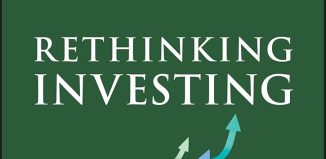The disappearing middle class
Many of the college students have now finished their finals and ended their fall semester. It seems that as college costs increase, classroom time decreases, but maybe that’s just my faulty memory. In any event, who are these students that have now been released into what we used to call “intersession” and will eventually go on to graduate with their bachelor’s degrees? Statistics tell us that 77 percent of them come from families in the top 25 percent of household incomes but only 9 percent are from families in the bottom 25 percent of incomes.
What does that mean? If you believe that education is the ladder to a financially successful life, that startling disparity among college graduates is telling us that social mobility has drastically declined in America. Put another way, America is no longer the land of opportunity it once was, attracting the ambitious from all over the world with the promise of the American Dream. It means that what you become in life depends more on who your parents and grandparents are than what skills you possess.
This conclusion is further reinforced by the information researchers have found about economic mobility here. A child born in the bottom quintile has only a 4 percent chance of rising to the top quintile, according to a Pew research study. Contrast that with Britain, where the number is about 12 percent and Canada with class advancement twice as likely as for the United States.
So we come back to the subject of the growing gap between the haves and the have-nots in our country. This has been a visible concern for at least the last 25 years. When my family and I were invited to the Bill Clinton White House in the early 1990s as part of an out-of-town press conference, we happened to meet David Gergen, the political commentator and former presidential adviser, in the hallway. As we chatted, my middle son asked Gergen what he thought was the major problem for the nation then, and he immediately referred to the growing gap between rich and poor.
Who filled that gap in past decades? The answer is, the middle class, the engine for advancement in America and everywhere. Pretty much everyone then, and perhaps even now, described oneself as being in the middle class. But today the middle class
is disappearing.
Why should we care?
Because the middle class is composed of the people who buy the goods and services that sustain the upper class, and without the former there cannot be an economically viable society. Inevitably if this situation persists there will be extreme social unrest among the lower class, and to underwrite the country’s expenses the upper class will be asked to shoulder unbearable taxes. Furthermore, intelligent and ambitious immigrants will pass us by as their ultimate destination, and will strike out for other shores where their prospects seem more promising. In fact that has already been happening on the graduate school level, as many of the most talented students choose countries like Germany in which to pursue their careers rather than the United States. If enough of the best and brightest go elsewhere, it could affect not just our economy but also the very security of our country.
The idea that our success depends on how our lives started rather than on our own hard work and native abilities goes against the grain of the American self-image. The columnist and author, Nicholas Kristof, wrote recently about this distressing trend and asked why none of the candidates for president was speaking about how to change this direction.
As we approach the end of the year we, as a nation, are intensely caught up in the frightening problem of terrorists and how we can protect ourselves and our way of life from their horrible violence. But as we look ahead to the new year and the coming presidential election, not all threats to our country are so overt. Some, like this troubling income gap and its consequences, are more insidious and could prove more threatening and difficult to solve.






